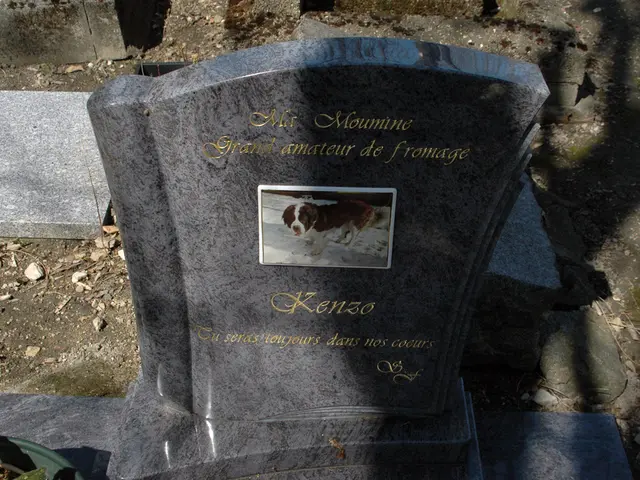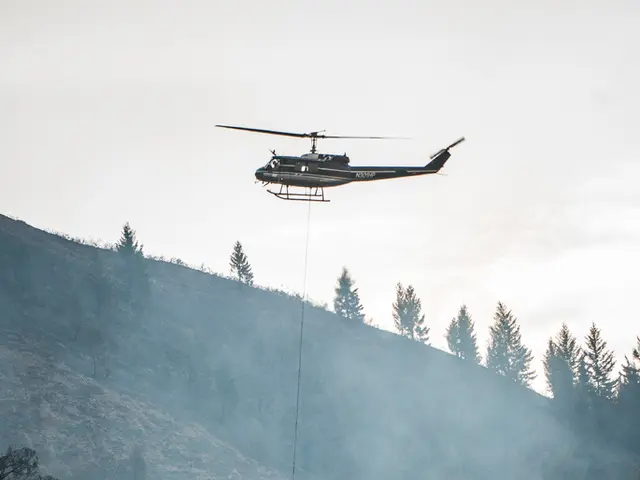Residents of Porter Ranch and Granada Hills urged to stop using water due to city's instructions
In the heart of Los Angeles, a water outage has affected approximately 9,200 households in Porter Ranch and Granada Hills. The cause? A critical valve failure at a pump station connected to a 10-million-gallon water tank[1][3].
The incident occurred on August 5, 2025, when a valve controlling water flow at the pump station failed to open during repair work[3]. The valve, located 20 feet underground, necessitated extensive excavation—both with machinery and by hand—to safely access and repair it while avoiding damage to nearby critical infrastructure like oil pipelines, fiber optic cables, and gas lines[3].
Current efforts to restore the water system include:
- Excavation completed about 85%, then carefully digging around the valve by hand to ensure safety[3].
- The broken valve was cut out and removed by August 10, with a new section of pipe being welded in place to restore water flow to the large tank serving the area[2].
- Use of high-capacity pumps and hoses to resupply and maintain water pressure in the affected trunk line feeding the water tank[1][2].
- Water quality testing and sampling to meet regulatory standards before lifting the Boil Water Notice; this testing process requires multiple samples and about 18 hours per test cycle for lab results[2].
- The LADWP and city agencies are urging customers to conserve water and avoid all non-essential use to preserve water pressure and speed recovery[2][3].
The city has provided resources for residents during the outage, including bottled water distribution centers, locations for residents to shower and wash laundry[3][4]. The YMCA in Porter Ranch offers showers and mobile laundry units from 5 a.m. to 10 p.m., while the Holleigh Bernson Memorial Park, O'Melveny Park, the intersection of Tampa Ave. and Sesnon Blvd., the YMCA in Porter Ranch, and the intersection of Rinaldi and Louise Ave. all offer similar facilities[3][4].
The emergency repair timeline was initially estimated through Friday morning, August 8, but complex underground work and safety precautions extended restoration efforts into at least August 10 and beyond[1][2][3]. As of 1:30 pm on Saturday, a 10-million-gallon tank serving the area was about 20% full, down from an estimated 27% full less than seven hours earlier[1].
Some people in the afflicted neighborhoods claim not everyone is following the advisory to lay off the taps, which could be contributing to the drop in tank levels[1]. DWP crews had planned to begin emptying the water from the pipe at 8 p.m. on Saturday, but the pipe blew out before that[1].
Restaurants in the area are relying on bottled water and other beverages, and outside deliveries of ice, due to the water outage. The L.A. Department of Water and Power (DWP) issued a notice to boil water in parts of Porter Ranch and Granada Hills[1]. The city aims to restore the water system by 3 a.m. on Monday, but this is dependent on the pressure[1].
DWP and city officials are working tirelessly to complete the repairs safely and restore reliable, safe water service as quickly as possible while supporting affected residents[1][2][3][4].
- Despite the ongoing water outage in Porter Ranch and Granada Hills, caused by a valve failure in California, businesses in the area are adapting by relying on bottled water and external beverage supplies.
- The Los Angeles Department of Water and Power (DWP) has advised residents to conserve water and avoid non-essential use to help preserve water pressure and speed up infrastructure restoration.
- In the midst of the crisis, city agencies and organizations like the YMCA in Porter Ranch and certain parks are providing facilities for showers, laundry, and bottled water distribution to affected residents.
- The water system restoration timeline in Los Angeles, following a valve malfunction, is proving challenging due to complex underground work and safety concerns, with the initial estimate being extended beyond August 10.
- As a result of the California water outage, the general news, health-and-wellness, and politics are all following the situation closely, with reporting on the efforts to repair the infrastructure, the impact on residents, and potential long-term implications for the environment and related legislation.




